A topic and project approach to child-directed learning was pioneered by the Villagers of Reggio Emilia in 1946 for their pre-school children.

The Reggio Preschool Pedagogy wasdesigned to restore the young children’s rights to choose for themselves and joyfully retain:-
Their personal liberty, A love of learning & enthusiasm to participate with passionate creativity.
Contents
Introduction to The Reggio Preschool Pedagogy
A ‘creative and reflective pedagogy’ (Bancroft,2007:5)
oflistening and relationships. (Abbot,Nutbrown,2001:128)
Reggio theory in practice
Examples of Working Practice:-
- A Child Initiated Emergent Curriculum
- ‘Giovanni’s 3-dimentional construction ‘The Mountains of Past and Future’
Using Various Media Resources
Reggio Pedagogy
Qualities Associated with Creative Learning
The Reggio Pedagogy Integrates Previous Educational Theories
A Yin and Yang perspective
Adults share their personal knowledge and experience through their wider access to resources,
Inappropriate adult input can be ignored:-
Extending investigation into the community.
Integrating II and III dimensional representation
Engaging in an emergent curriculum of creative activity.
Celebrating Change
Motivation
Thinking Processes
Qualities associated with the Human Potential
Conclusion
Steiner, Montessori and Piaget
Early year’s development
The essence of Reggio approach summarised by the author
Conclusion
Introduction to The Reggio Preschool Pedagogy
| In 1946, after Nazi occupation of their home land, the villagers of Villa Cella, Reggio, Italy, sought to create a culturally progressive experience for their new generation of young children. The cooperative efforts of the working community; the farmer’s, the day labourers, the factory workers built and funded a specially designed nursery school for their children. (Opened January 13th, 1947 with 30 pupils, a teacher and a cook).
‘In every brick of “the people’s preschool” there was trust, awareness, willingness, and hope.’ (Barazzoni,2000:29) which inspired:- Socialised Management, Democracy, Young children as Liberated Citizens. This ‘profound illustration of humanity’ founded ‘a culture and professionality’ (Barazzoni,2000:28) based on ‘the richness and concreteness’ (Reggio Children,2000:9) of children’s ‘ideas, theories, questions and opinions’. (Katz,Cesarone,1994:25) |
Later many other nursery schools were established in the Reggio region following the same ethos of socialised management, democracy and vision of the young children as liberated citizens. These schools remained in the care of the village Cooperatives until 1967 when the Municipality of Reggio, the civil council took over the management and financial welfare of the nursery schools.
The Reggio approach emphasises the development of the child through the content and organisation of projects that focus on the development of a child who:-
- employs all of his resources,
- is capable of making choices
- is responsible for his own actions,
- has a sense of solidarity,
- hasa desire to learn and participate in the learning process with extreme creativity.
Reggio philosophy is based on ‘a culture and professionalism which regenerate themselves as they keep up with social changes and with the children’s needs and values’.(Barazzoni,2000:28)
The Reggio approach uses various media in order to create different representational sequences and combinations that record children’s creative activity and thereby present opportunities for reflection, assessment and progressive development. Different materials and media are considered important because they engage the children in a personally meaningful context that connects to other meaningful experiences. The creative value presented by Malaguzzias the ‘100 languages of children’(Bancroft,2007:14,citingMalaguzzi)appears to integrate the different intelligences described by Gardner as :-
Linguistic intelligence.
Musical intelligence.
Logical – mathematical intelligence.
Spatial intelligence.
Body – kinaesthetic intelligence.
Plus : Intra/inter personal intelligence ‘knowledge of emotions’, control of emotions and sensitivity to one’s own and others emotional states.’ (Gardner,1993:69)
Also Naturalist intelligence ‘extensive knowledge of the living world’. (Gardner,1993:47-48)
Spiritual intelligence ‘the abstract realm of the spiritual’. (Gardner,B????:53)
Extensional intelligence ‘aesthetic philosophical and Scientific works and systems’(Gardner,B????:61)‘
and‘possibly moral intelligences’…. ‘morality is then probably a statement about personality, individuality, will, and in the happiest of cases, about the highest realisation of human nature.’ (Gardner,B????:77) ‘….clearly we must strive to nurture both intelligences’ and morality and, insofar as possible, yoke them together as virtues’ (Gardner,B????:46)withina topic based curriculum that actively generates a richness of intellectual development within the context of informed conceptualised thought.(Gardner,1993:73)
‘The Reggio Emilia approach is highly regarded for the quality of its intellectual content, responsiveness to children, extraordinary aesthetic value of children’s production, and for the effectiveness of curriculum documentation.’ (Feeney, Galper, Seefeldt,2009:232-233)
Spaggiari– Director of the Municipal Department of Education of Reggio Emilia, describes the pedagogy as one which supports and confirms the following :-
- A child’s knowledge is aided, in its genesis and in its development, by interaction and social cooperation;
- Education is conceived in constructivist’s terms in that it is the child himself who is the builder and main protagonist of his life and his learning processes;
- Children are moved to an unlimited curiosity and by a greater and innate desire to know and to discover;
- This extraordinary desire to investigate reality must be made visible and helped to grow and develop without being imprisoned in reconstituted models based on programmed information;
- The most important ability for a teacher is knowing how to capture those vital and significant events as they appear, around which the teacher’s invention should be organized.
Reggio philosophy encourages adults to respond to the children’s interests and initiatives; the children thereby gain a resource of worldly knowledge and experience that can be integrated within their own chosen theme/topic of study.
‘The studies engaged in by children and teachers are conducted over fairly long periods of time and may be quite elaborate.’ (Feeney,Galper,Seefeldt,2009:232) This organically provides an enrichment of choices, speculation and negotiation. As the interest grows the child/ren initiated activities; thoughts and ideas motivate sustained learning within a specifically identified area of cognitive development. Within the context of child initiated learning, Reggio suggests that the uniqueness of experience and activity presented, by both the child and the adult, creates a spontaneous potential for creativity and opportunity across a wide spectrum of child-directed learning.
The adults are therefore called to structure the educational experience primarily as it evolves rather than beforehand. They may initiate co-operatively organised follow up choices of activity that support a natural extention of the children’s free-play activities. (Cited in Reggio Children,2000:8)
Loris Malaguzzi(1920-1994)was the first pedagogical director of the municipal early childhood services in Reggio. Malaguzzi’s‘invocative thinking’ created a ‘pedagogy of transgression’ imbued with ‘hope and expectation’ (Barazzoni,2000:2),based on a philosophy of community participation and the expression of ‘the 100 languages of children’ (Bancroft,2007:14) within a child initiated topic approach to learning. The topic-project approach creates a community of children and adults working together. Active and sincere in their participation, co-workers openly ask questions and happily acknowledge what they do not know, and where and what they would like to understand better. ‘Information flows from the older ones to the younger ones, or from those who possess knowledge to those who don’t.’ (The School DVD:5-6)
The Reggio exhibition of the 100 languages of children expanded the psychology of intellectual development into a kaleidoscope of creativity illustrated through the children’s world of communication – ‘a shining testament to human possibilities’ (Gardener cited in Children in Europe,2004:3)
‘……the capacious and inspiring conception of children – as active, engaged, exploring young spirits, capable of remaining with questions and themes for many weeks, able to work alongside peers and adults, welcoming the opportunity to express themselves in many languages, to create new ones, and to apprehend and enter into those modes of expression that are fashioned by their age-mates.’ (Gardener cited in Children in Europe,2004:17)
A ‘creative and reflective pedagogy’ (Bancroft,2007:5)
of listening and relationships. (Abbot,Nutbrown,2001:128)
The roles of the Reggio teachers
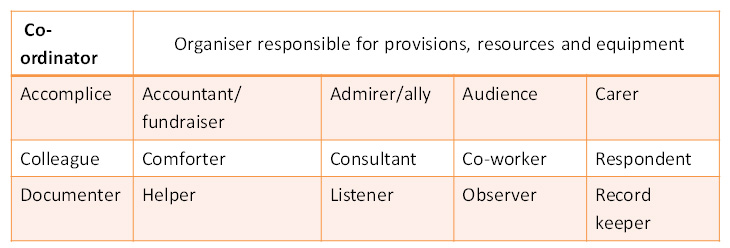
A pedagogy imbued with open-hearted authenticity ‘…….the activity of making projects conceived as functional interaction between needs, resources, conditions, knowledge and method.’ (Reggio Children 2001:56)
Reggio teachers feel it is important to focus on beauty, art and aesthetic value.
‘the attention to detail and beauty’ ‘foster the children’s aesthetic sense’ and illustrates ‘an “amiable” environment where relationships can flourish.’ (Frazer, Gestwiki,Ed. 2002:89)
The Reggio approach
The Reggio approach appears to have an integrated focus on participation, democracy, social and environmental relationships, listening skills, child initiated learning,documentation, creativity and independence.These important issues are co-ordinated within the organisation of the physical environment and the social relationships established within the educational community –‘nurturing the pleasure of participation and valuing each person’s individuality.’(Rinaldi,2006:51)Reggio philosophy illustrates a ‘passion for a process that acknowledges our needs as individuals and as a society to engage in a cooperative learning adventure with others, both children and adults.’ (Katz,Cesarone Ed.,1994:36)
‘The layout of the buildings is designed to facilitate meetings and interaction between children, and great care is taken over areas of welcoming and departure.’ (Thornton,Brunton,2005:50)
The Reggio pedagogy appears to be based upon an educational community that respects and values the ability and potential of the individual child and emphasizes that children are competent learners rather than ‘empty vessels that need to be filled with knowledge’ (Frazer, Gestwiki,Ed. 2002:78)
Organisation of Community-based Environmental Foundations
This philosophy is supported by the organisation of community based environmental foundations which are pictorially represented in the diagramme below.

The Reggio philosophy embraces concerns that children may lose their natural ability to learn through creative activity when the adult organizes a predetermined curriculum and agenda of specified time and results. This was presented by
Malaguzziwhen he said:-
‘All that we need to knowabout children, for children, is best learned from the children themselves.’ (Cited in Bancroft,2007:8)
In Reggio adults actively engage in ‘collaboration, dialogue and observation’ (Bancroft,2007:14)which is considered fundamental because ‘when reciprocity is placed at the core of relationships’, ‘patterns of communication in the classroom’ become ‘more respectful, more equal and more interactive’ Respectful collaboration on all levels of interaction whereby leadership steps into the background and allows ‘strength, personalities and perspectives to come together, often challenging each other to create new perspectives and knowledge’, understanding and skills. (Frazer, Gestwiki,Ed.2002:78&94)‘Children are biologically predisposed to interpreting data with incredible creativity- encoding and decoding, listening, communicating and establishing relationships.’(Rinaldi,2006:116)
‘…a process that acknowledges our need as individuals and as a society to engage in a co-operative learning adventure with others, both children and adults.’ (Katz,Cesarone Ed.,1994:36)
Interactions between children and either an adult or a child who is more confident, act as scaffolding to nudge children to go beyond what they can achieve on their own.’ (Frazer, Gestwiki,Ed. 2002:66)
Maybe, it is the adults’ freedom to choose how, where, and when they engages with the children that gives the children permission (by example) to follow their own initiatives, and thereby maintain their natural disposition to meet their true potential?
‘…..they say our teacher’s are beautiful. It is true, there are a few places in the world where teachers in schools, early childhood or anywhere else, are as beautiful, as dignified, as womanly as they are here.’(Rinaldi,2006:167)
Reggio presents children as competent learners, personally responsible for their own actions and their own educational development, in charge of developing their own abilities, embracing their own goals and their own thinking within a holistic integration of information and understanding.
Reggio theory in practice – ‘Following a curriculum based on ideas and thinking rather than content led’. (100 Voices:DVD)
Freedom
Environmental influences of choice and a trusting disposition
Listening
Personal interpretation –generally ‘adults tend to overestimate the children’s academic ability and underestimate their ability to think and problem solve.’ (100 Voices DVD)
Communication
Relationship with an experience – ‘the child as a sophisticated thinker and communicator’.
Truth (100 Voices DVD)
A perspective based on inner feelings and external information.
Courage
Underlying personal confidence and enthusiasm.
Passion– That spark of interest that fuels a path of inquiry and motivates creative expression.
Curiosity – an extraordinary desire to investigate reality, to know, to discover.(Reggio Children, 2000:8)
Children are endowed with ‘genius, talent and creativity…..So to awaken his genius, you need to open his heart, remove complexes, tension and fear.’
The more traditional issues related to the teacher’s professional performance have been transformed into informal co-operative
 How well the adult can listen to what and how the child/ren want to learn and achieve, feeling comfortable with unpredictable activity and creative styles of communication.
How well the adult can listen to what and how the child/ren want to learn and achieve, feeling comfortable with unpredictable activity and creative styles of communication.
Successful scaffolding within the Zone of Proximal Development (Vygotsky) where the ‘emphasis is on relationship and reciprocity and the outcome emerges as it unfolds.’ (Frazer, Gestwiki,Ed. 2002:86)
 How to embrace changes and integrate personal experience with the unique specialness of child initiated learning.
How to embrace changes and integrate personal experience with the unique specialness of child initiated learning.
Facilitating an inherently open-ended learning environment
 An Emergent Curriculum – children working at their own natural pace developing their own style and methods for learning .
An Emergent Curriculum – children working at their own natural pace developing their own style and methods for learning .
Sharing of ideas & possibilities without an attachment to a preconceived result.
Consideration of what others think – the child, the adult and the other children.
Examples of Working Practice:-
Daily timetable incorporates natural periods of flexibility e.g.: Arrival 7.30-9am; departure 3.30-4pm or 4-6.20pm.(Thornton,Brunton,2005:62 )
- Sometimes the adults do not interrupt or disturb the children.‘…….two little girls spent 3 hours or so playing together with a collectionof red and pink glass objects displayed on a lighter box.‘No attempt was made to intervene and move them on to something else.’ (Abbot,Nutbrown,2001:69) A further example (cited in Lewin, Benham,2006:28) – four restless boys went into a store room area, closed the door and were busy doing their own thing unobserved/unsupported/unsupervised until one came and asked for some adult help with a tricky process of moving a complex piece of construction work on to a different table within their working area in the store room.
- The adults facilitate specially designed environmental support.
When the children wanted to make their paper-mache mountain into a volcano the assisting adults helped the children investigatethings that would safely explode in the classroom such as popcorn and baking powder and lemon juice(Frazer, Gestwiki,Ed. 2002:143&177)‘Conversely, it was accepted that children sometimes need to ‘flit’ and activities were established to enable them to do this.’ E.g. ‘..a weaving loom…… so that children could add just one row or perhaps more in passing ’ (Abbot,Nutbrown,2001:69)
- Very special worldly experience. For ExampleGoing to see alocal water tower and later the Space Needleas an extension to the children’s focus on aspects related to height:. ‘They took the elevator up and experienced real height and different perspectives.’ (Frazer, Gestwiki,Ed. 2002:204-207)
- ‘….dynamic interaction of adults and children with one another and with the environment.’ The environment ‘acts as the third teacher’. (Frazer, Gestwiki,Ed. 2002:87&99)
Parents can provide profound, timely and appropriate support.
The perfect ending for the height project was provided when a parent invited the class to the building downtown where he worked. It was one of the tallest buildings in Seattle, looking down on both the water tower and the space needle. (Frazer, Gestwiki,Ed. 2002:208)
Building a pyramid of related experiences.The emergent curriculum within The Height Project illustrates ‘….our need as individuals and as a society to engage in a co-operative learning adventure with others, both children and adults.’ (Katz,Cesarone,Ed.,1994:36)
The Reggio approach encourages children to live in the moment rather than prepare themselves for a futuredefined by the adult educator’s personal views and experiences.Topics of interest organically grow (mindmap) into multifaceted areas of creativity and study, through which each child can find ‘not only an understanding of the specific topic, but also an understanding of their own learning style and a deeper understanding of themselves.’ (Katz,Cesarone,Ed.,1994:50)Rinaldisuggests that‘….every child is stunted if the endpoint of learning is formulated in advance.’
The Reggio approach incorporates:-
- The main aspect within the High/Scope pedagogy which focuses on play and learning whereby adults engage with the children’s play as shared Special Time.
- Montessori teaching methods after the age of seven present learning through child initiated topics and projects of work that encourage the children to work together.
- As presented by Steiner philosophy and practice,the children’s development and well being is nurtured through a rich sensory environment and experiential activities provided by natural materials and aesthetically pleasing surroundings.
A Child Initiated Emergent Curriculum
An ‘exploration of excellence in early childhood education.’
Adults and children working together as a team respectfully collaborating on all levels of interaction, addressing the day to day quality of the children’s lives.
(Frazer, Gestwiki,Ed. 2002:92)(Katz,Cesarone,1994:17)

The teaching adults are called to structure the educational experience primarily as it evolves and thereby capture those vital and significant events, as they appear,(Reggio Children,2000:8)and consolidated, unify and empower child-initiated learning through a commitment to ‘developmentally appropriate practices’ (Katz,Cesarone,1994:17) moulded into the very foundations of a community based child centred approach.
Child Initiated Curriculum
The Reggio pedagogy illustrates a child initiated curriculum based on topics of interest and describes a system of shared learning that can spontaneously integrate the theoriespresented by:-
- Howard Gardner as different fields of intelligence – linguistic, musical, logical (mathematical), spatial, body – kinaesthetic, & inter personal intelligence related to the ‘computational power of the brain’ and ‘Experiential Intelligence’ which David Perkins terms as ‘changable, learnable and reflective Intelligence’ (Gardner,1996:2);
- Edward De Bono as different types of thinking– theSix Thinking Hats:
Red-hat Thinking: emotions, feelings, intuition;
White hat -objective information;
Black-Hat: caution, truth, reality;
Yellow hat: optimism, feasibility benifits;
Green-Hat :creative ideas, suggestions;
Blue-Hat, summary, reflection.;(DeBono,2000:13-14 :1992,74-96.) - Tony Buzan’s Mind map approach to the integration of thinking, learning and memory skills. Symbolic representation of the radiating branches of associated thoughts, integrating: knowledge and ideas, left brain thinking (lists, sequences, numbers, letters) and right brain thinking(rhythms, colours, pictures, imagination) with creative thinking and memory skills. (BuzanDVD)‘Creativity is not just the quality of thinking of each individual but is also an interactive, relational and social project…..an everyday right as a quality of life…. It requires a context that allows it to exist, be expressed, to become visible………What we hope for is creative learning and creative teachers…….. the competent and creative child exists if there is a competent and creative adult.’ (Rinaldi,2006:120)
Within Co-operative learning any topic of study or theme of activity can offer children their own free time and individual space to explore their own areas of interest and creativity.However,‘the children don’t just think about living for themselves or their own interests.’(The School DVD:3)Personal goals and individual projects and perspectives are present within collaborative group projects that are ‘working towards a common goal as opposed to working towards a personal goal.’(Katz,Cesarone Ed.,1994:83)
Hoyuelos combines the above description of Reggio pedagogy with ‘….the ideological concept of a transparent school and transparent education and the aesthetic ideaof offering a relational image of childhood through uniting process with content.’ (Cited in Children in Europe2004:7)
Giovanni’s 3-dimentional construction ‘The Mountains of Past and Future’
‘The 100 languages of children’ help children communicate creative thinking skills that are beyond their level of verbal communication.
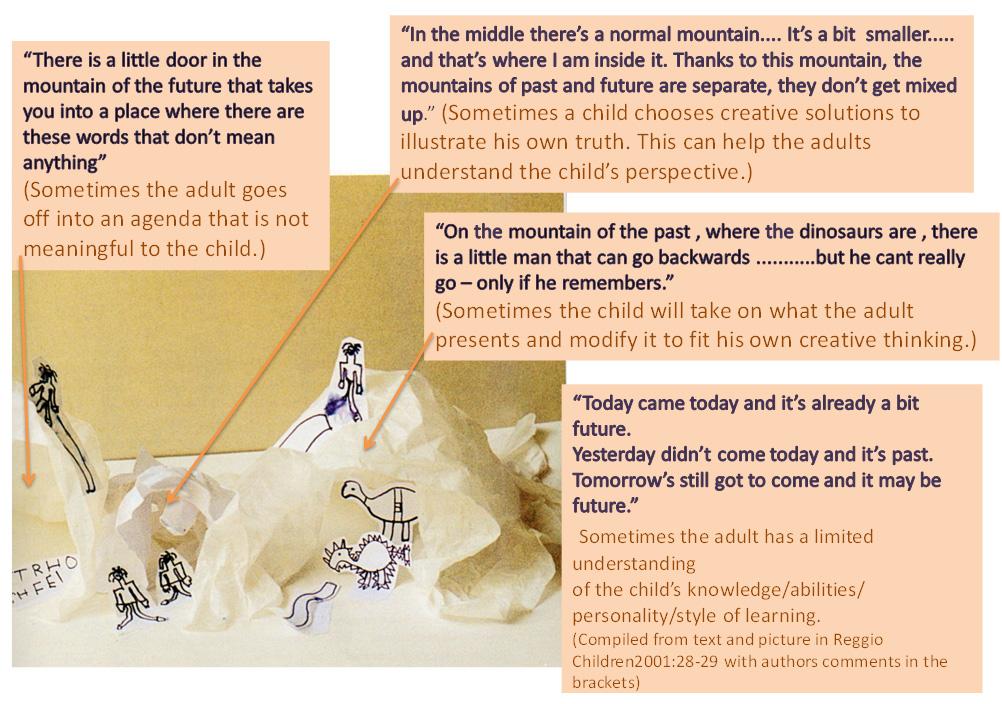
Using Various Media Resources
The Reggio approach uses various media resources in order to create different representational sequences and combinations that document (record) the children’s creative activity and present opportunities for reflection, assessment and progressive development.
The different materials and media technology engage the children in a personally meaningful context that connects to other meaningful experiences and integrates different intelligences (Gardner) within a creative focus. TheReggio approach implies that giving the children the freedom to choose where and with whom, to invest their curiosity, intelligence and their emotionsgenerates a richness of intellectual development within the context of informed and conceptualised thought, illustrated throughtwo and three dimensional construction. (Katz,Cesarone Ed.,1994:42-43)
The Reggio approach appears to encourage the children to develop their personal skills of independence– using multiple systems of communication and open ended areas of choice to support children’s independent skills and thinkingwithin a philosophy that ‘any good creative and expedient work requires considerable discipline and obedience.’ (The School DVD:15)
Cameron suggests that ‘whether freedom is negligence, risk, or independence is a central concern of our times.‘(Cited in Early Childhood,2005:26)
‘Where and how far practitioners can promote children’s independence or freedom and where that becomes “risk”, depend to a large extent on the waythese concepts are understood, not just within early childhood pedagogy but also in wider cultural understandings.’(Early Childhood,2005:26)
When considering risk factors within the context of children’s social-emotional and physical environment, adultsneed to evaluate potential risks within the of promotion of learning and social development.They might need to consider the levels of expectation and independence related to standards of self-help, personal careand management of the ‘social risks of incurring peer or adult displeasure………the boundary between care and lack of care may be pushed where independence is defined as freedom’. The adults’conceptual understanding of cultural aspects within the local and wider societies,knowledge of each child,and the parents’ views and expectations, may also influence individual assessments of safety and acceptable levels of intimate contact as physical reassurance. Independent thinking andfreedom to make choices may be considered in relation to how ‘restricting options for children’may ‘inhibit creativity’. The children’s endeavours when doing things for themselves may also naturally include some of the positive aspects that risk taking and making mistakes contribute towards children’s learning and development. ‘……this formulation of independence may be culturally specific……Risk is socially and culturally defined.’(Early Childhood,2005:24-26)
The Reggio approach seems to giveunsupervised freedomsto the children (Lewin Benham,2006:28)and supports this with a strong emphasis onan awareness and understanding of the individual child’s needs and abilities; equality‘a precious form of mutual respect’;integration and communication with individual parents; ‘public visibility’ – integration with the local community, cultural and community resources(Children in Europe,2004:2&7);reflective strategies; and an unstructured timetable tend to support children working safely within their own range of ability while engaging in self-motivated activity.
Reggio Pedagogy
The Reggio pedagogy integrates many previously pioneered theories of education and related psychology that emphasize children’s ‘problem solving ability and creative endeavour’. (Bernard,1965:93).
| Qualities that are associated with creative learning:- | |
| Willingness to explore | Experimenting, |
| Curiosity | Enquiring |
| Play and flow | Playfulness |
| Concentration, involvement, immersion | Focus, |
| Confidence and self-esteem. Ownership | Initiating ideas. |
| Perseverance and resilience | Persistence |
| Collaboration and cooperation | Willingness to be involved |
| Imagination and Inventive ingenuity | Observations, making connections, prediction |
| Autonomy and choice | |
| Hypothesis, powerful thinking | |
| Independence and self motivation | |
| Sustained shared thinking | |
| Making connections, Reflective thinking | |
| Risk taking | |
| Joy and surprise | |
| Aesthetic sensitivity | |
| Wellbeing | (compiled from Bancroft,2007:19) |
The Reggio approach encourages children to invest their ‘time and energy’ in socially meaningful creative activity. Research on cognitive development and psychology reviewed by Meadow’s suggests that this can generate children’s consciousness and the higher mental functions that constitute intelligence. (Meadows,2006: 236,257&311)
Both Steiner and Reggio pedagogy relating to the early years 3-7 present a commitment to an emphasis on creative activity within a play and learn philosophy, which places particular importance on aesthetics and the natural world. In keeping with the theories of Bruner and Vygotsky,(Frazer, Gestwiki,Ed. 2002:66)Steiner and Reggio, present social interaction as primary to all areas of children’s personal and educational development, and develop a strong sense of community and inherent cultural influences. They also embrace children’s education within the context of their families, building strong relationships with parents and other family members, based on mutual trust and respect.(Feeney,Galper,Seefeldt,2009: 137,69).Children within an age range of 3-4years, remain in the same class throughout their nursery school attendance offering a continuity of care(Lewin-Benham,2006:58); ‘for relationships to be meaningful, they need to endure over time.’ (Feeney,Galper,Seefeldt,2009:67, citing Hinde)
‘Children who are able to make and retain friendships in the kindergarten typically adjust more easily to school and make greater gains in achievement’ and ‘emotional competencies’. (Feeney,Galper,Seefeldt,2009:107, citing Ladd,1990)
The Reggio Pedagogy Integrates Other Previous Educational Theories
The Reggio pedagogy integrates many previously pioneered theories of education and related psychology that emphasize children’s ‘problem solving ability and creative endeavour’. (Bernard,1965: 93).
| High/Scope – teachers are trained in specific skills and approaches that help children engage in and share their play/learning experiences and resolve their social disagreements and conflicts. * | The author noted that on a video recording of Reggio classroom activity where two children were arguing the teacher approached and organically, from his own natural disposition, engaged in an accurate example of the High/Scope approach to conflict resolution. * |
| Steiner- presented that imagination and creativity are the most essential aspects of play and learning during the children’s early years 3 to 7 | Children have free access to the art studio and resident artist as well as a specified and well equipped art and craft area within their own classroom. There is a strong emphasis on artistic creativity throughout the topics or themes that have captured both individually and collectively the children’s interest. A special a focus is placed on the production of displays illustrating the children’s activities and resulting work. |
| Montessori presented – children should be free within the classroom environment to choose activities and organize their own social interactions and communications and have open access to a garden area. | The children are free to move around the whole of the school campus integrating with children and adults freely. They have open access to a special communal area called the Piazza and an outdoor communal garden. |
| Vygotsky presents – the role of the teacher is to support the child’s learning within the ‘proximal zone of development’(PZD) supporting the child’s choice of activity and unique approach to the potential for learning within chosen activities. ‘… the process of socialisation….was rooted in the use of physical tools and symbols…especially language’ (cited in Gardner,1996:199) | Reggio teachers are encouraged to observe and record the children’s activities and thereby respond supportively to emergent themes of interest or enquiry, and appropriately support the children’s spontaneous interactions. The teacher tries to present enriched environmental choices that are initiated by the children’s own themes of interest and what they feel is appropriate to develop and in the way they want to develop it. Teacher lead activities and teacher initiated choices are considered an optional aspect of classroom activity. |
| Chomsky-presents that learning is dependent upon interactive communication, language development and social integration. | The design and plan of the schools that have been specially built illustrate an openness and connectedness within the different areas. The walls are often constructed of window glass down to the floor; children can go into the kitchen and talk to or help the cook. Media Technology is available to the children and facilitates revisiting, extended dialogue and discussion, reflection, memory etc. |
| Pinney-presented that young children ‘are their own best expert’ and given a supportive, caring environment they can successfully negotiate choices that will enhance their personal, social and educational development. She pioneered Creative Listening, Special Time and Child Directed Learning. | The adults facilitate child initiated learning – ‘the complex and multiple strategies’ that are necessary for sustaining children’s authentic ‘knowledge-building processes’ and creativity. B26p132
Every child is an ‘exquisitely individual and personal entity…’ b10p34 |
| Bruner – the importance of languaged communication, social interaction and community and cultural experiences within children’s learning experiences. | ‘Rather than focusing on the developing child as an autonomous learner, Reggio…… educators see education as a communal activity and sharing of culture through collaboration among children and also between children and teachers, who opened topics’ ‘to speculation and negotiation.’ B16P71 |
| The Early Years Foundation Stage – Elements of creativity set as principles within concepts of: a unique strong child; positive relationships; enabling environments; learning and development. (Bancroft,2007:9) | The creative value of many languages of expression is actively generated by
‘The 100 languages of children’(Bancroft,2007:14) Cites Loris Malaguzzi ‘in functional terms: order and measurement; time, things and nature; body and movement; speaking and words; messages, forms and media; self and others.’ (Katz,Cesarone,Eds.1994:50) |
A Yin and Yang Perspective
The differences within the Steiner and Reggio pedagogical approaches are considered by the author from a Yin and Yang perspective.
| Steiner supporting a more Yin perspective (female) | Reggio presenting a more Yang perspective (male) |
| Considers child’s learning and creativity is boundless when supported by a growing knowledge and understanding of the natural world and creativity within organized rhythms of repetition and imitation. | Considers child’s learning through creativity is boundless when supported by a team of conscientiously supportive adults, who believe that learning takes place within an uninterrupted momentum of problem solving activity. |
| Embraces fantasy and imagination within the context of creative activity – music making, singing, story -telling and theatre. | Based on scientific, resourceful, exploratory approaches to creativity combined with critical/reflective evaluation |
| Encourages the child’s desires to be creative within a bounteous, natural homely environment with minimal science and technological input. | An environment rich in art, science and technology. |
| A strong emphasis on teaching by example and sharing through the arts – music, dance, non-competitive games and festive events. | A strong emphasis on the child as his own best expert. Using media systems to document and reflect creativity and provide informal feedback. |
| Considers the child as a seedling that adults and communities need to hold in a protective and nurturing environment. | Considers the child as a young citizens within a community of people with whom the teachers, resident artist and staff engage freely as individuals and co-operatively as a team. |
| Emphasizes environmental opportunities and organized interactive activities for the learning of coordination, movement and balance through foundation art and craft skills, playing musical instruments, songs, Eurhythmy, skipping and clapping games, and non-competitive sports. | Emphasizes the importance of supporting children’s right to be :- motivated by curiosity active explorers creators and inventors (creatively representing their knowledge and understanding of the worldly environment.) |
| Encourages the child’s:- – individual personality, – abilities and interests – aesthetic appreciation and creative expression within a community based emphasis on artistic, social and cultural foundations. |
Presents the school environment as a child centred microcosm of the community and world around. Giving a community based emphasis on artistic, social and cultural foundations. The whole community is deeply committed to an ethos of love, respect and care. (Katz ,Cesarone,Eds. 1994:18) |
| Teachers are encouraged to use repetition, revisiting, review and presentation as foundations within the play and learn curriculum. | Documentation is considered an important part of both the adults’ and the children’s in school and out of school activity. |
Like other child centred approaches to education (e.g. Steiner, Montessori, High/scope, Foundation Phase) the Reggio approach has also been noted for the ability to successfully support a small percentage of children who have specified learning differences.
‘Preschools minimize many of the affects of disability and a slower rate of learning because the learning environment matches the developmental and social needs of the individual child.’ (Abbot,Nutbrown,2001:6)
The topic approach can encourage a slower and more in depth exploration and in this way supports a wider variation of interest and ability.(Frazer,Gestwiki,Ed.,2002:264)‘Children’s fascinations initiate a deeper and deeper rather than wider and wider focus of enquiry’.(100 Voices DVD)
Adults share their personal knowledge and experience through their wider access to resources,
‘…a process that acknowledges our need as individuals and as a society to engage in a co-operative learning adventure with others, both children and adults.’ (Katz,Cesarone Ed.,1994:36)
When the children were sharing an interest in being tall, being up high, the teachers created a display board of pictures of tall buildings from Seattle where the school is located. The children built a cityscape right underneath the pictures of the tall buildings presented as a wall landscape created by the adult. Later a mirrored platform was presented.The children built a sky scraper on this and enjoyed the reflective aspect that extended their structure into a new perspective.As the children built a physical structure on the mirror, the building almost doubled in height.(Frazer, Gestwiki,Ed. 2002:205)
Inappropriate adult input can be ignored:-
Listening to the children’s conversations the teachers hypothesized that a possible next path might be birds, so they brought in branches, nests and little bird figures.
‘But continued careful attention to the playconvinced them (the adults) that this was not the direction to pursue…….the (childrens’) play was still about being tall, being up high’ (Frazer, Gestwiki,Ed. 2002:205)
Extending investigation into the community. Emergent, open ended, ‘child initiated, adult framed’. (100 Voices: DVD)
Example: The teachers decided to extend this theme of investigation into the communityand they arranged to visit a water tower in a nearby city park. This visit initiated the project into III dimensional creative work. ‘The teachers offered clay, and the children began to build the water tower brick by brick. For over a month, a number of children worked making the bricks and then using the bricks to build the water tower.’ It was hard, painstaking work but the children were really motivated.‘ …co-constructing as group members learning from one another’
Interactions between children and either an adult or a child who is more confident act as scaffolding to nudge children to go beyond what they can achieve on their own.’ (Frazer, Gestwiki,Ed. 2002: 94, 206-207,66)
Integrating II and III dimensional representation
As they built, they compared their sketches and referred to the drawings like blueprints. (Frazer, Gestwiki,Ed. 2002:207)
The Reggio approach incorporates the use of cameras as a natural way for children to express themselves and review their projects of activity. For the adults cameras are also considered useful for recording detailed observation and assessment. In contrast to this Steiner kindergartens present that media technology is considered inappropriate within the early years and lower-school classes.
The use of cameras also presents questions around the moral issues related to the children’s right to a camera free play and learn environment. Furthermore, teachers and children may use the camera in situations where a more intimate, multisensory approach to listening and observation could be of greater benefit to one or more individuals. Also, the adult operating the camera may miss a potential for spontaneous interaction that could initiate a more comprehensive understanding of the child/ren’s perspective. Finally, there is the issue of adult responsibility for discerning the appropriate environment, time, place and audience for viewing camera recorded documentation. (Early Childhood,2005:28& 32)
Engaging in an emergent curriculum of creative activity.
The High/Scope application of plan – do – review appears to have been reversed within the Reggio approach as follows:-
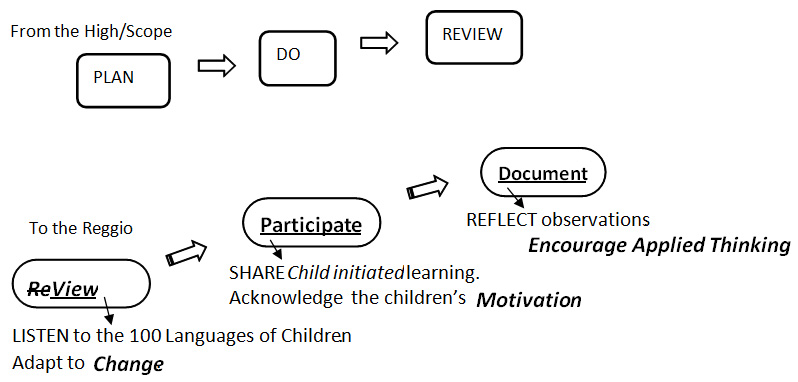
The Reggio approach presentschanging the environment to meet the child/children’s chosen areas of interest and enquiry. Learning differences, interests, abilities and disabilities, potential, physical development,personality and previous experience are all considered creative aspects within a child’s individual preferencesand learning style. The child himself is considered ‘the builder and main protagonist of his life and his learning processes.’(Reggio Children,2000:8)
When facilitating children learning through creative activity, Reggio teachers also appear to successfully integrate the influences ofChange, Motivation, and Applied Thinking .
Celebrating Change
Reggio teachers appear to creatively relate to elements and influences that facilitate change -acknowledging that changes may also be implemented by problem solving processes and learning to support, to nourish, to help what is already growing within the child.
‘By surrendering our personal insistence to the larger current of meaningful change.’ (Hellinger 2007:184)
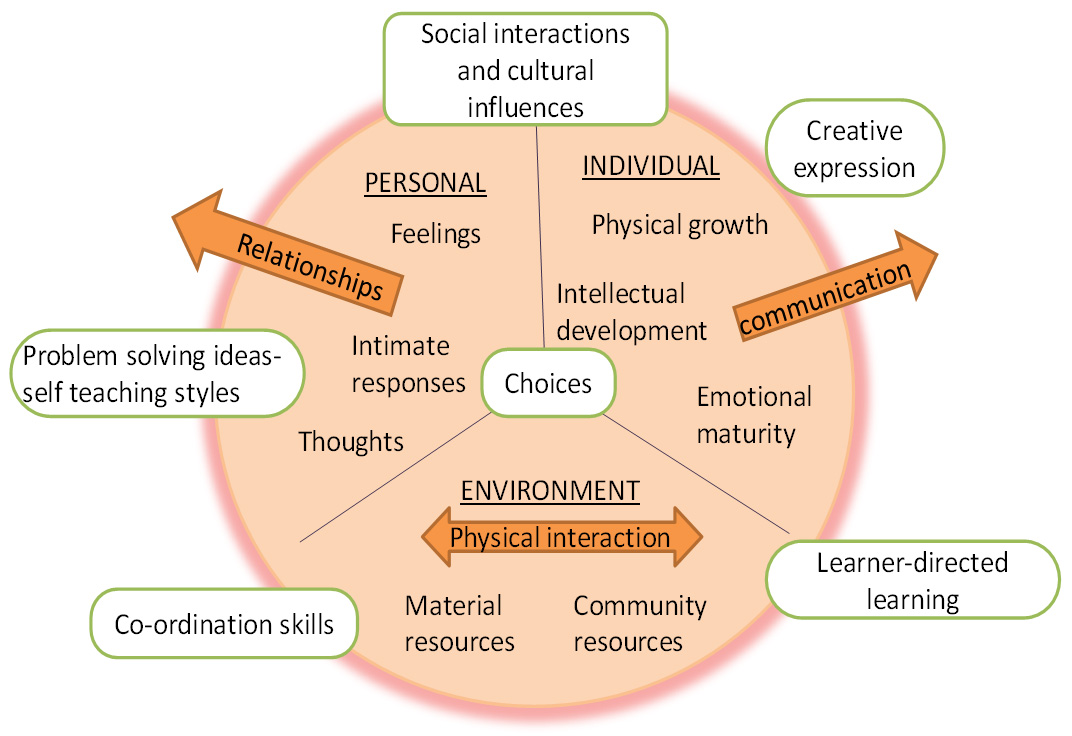
The Reggio environment appears to encourage everyone to feel comfortable with the unpredictable. This also supports personal investigation, discovery, shared learning experiences, and respects the children’s need to revisit their learning experience and create continuity within a broad spectrum of flexibility and movements of change. (Early Childhood,2005:19&14)
Motivation
During the early years motivation appears to be initiated by ‘curiosity, wonder and enthusiasm.’(Katz,Cesarone Ed.,1994:50) This initiates further development as illustrated in the author’s chart below, where each stage incorporates an integration of the previous stages. The chart also illustrates the inter-dependence between motivation and the development of complex thinking within children’s creative play.
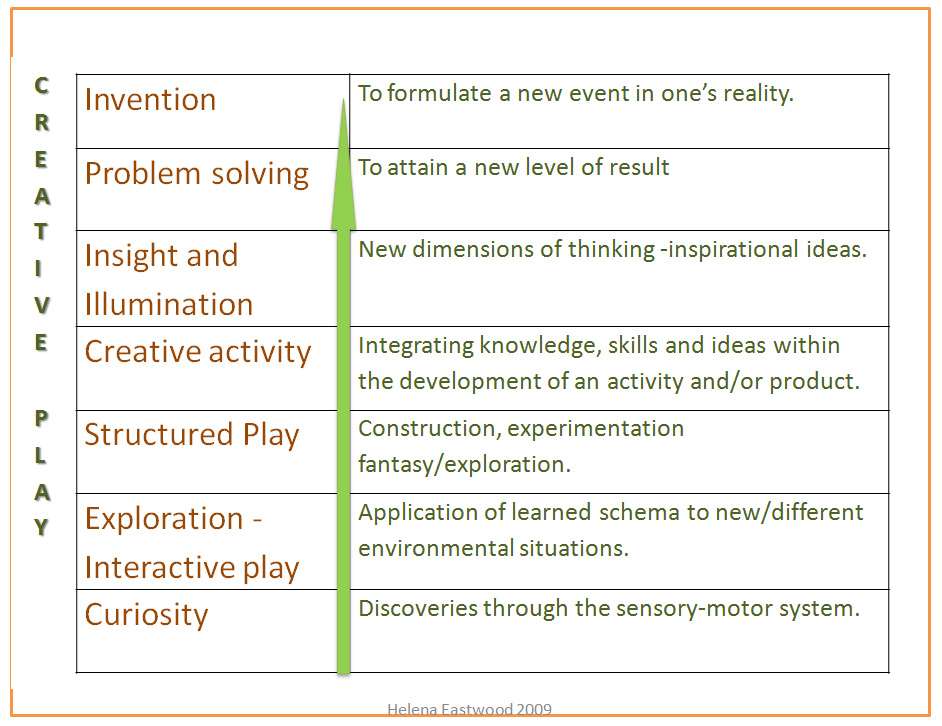
‘….describing the hundred languages of expression, Malaguzzi recognized all the many different ways in which children interpret the world and represent their ideas and theories.’ (Thornton &Brunton 2005:9)
Thinking Processes
This chart presents inter-related aspects that contribute to the development of inner courage, confidence, enthusiasm and a joyful disposition also appear to influence children’sconnections between ideas and things – a “divergent thought” that strays from any kind of coding – belonging strictly to the method of procedure in the consciousness of all children.’ (Reggio Children2001:57)
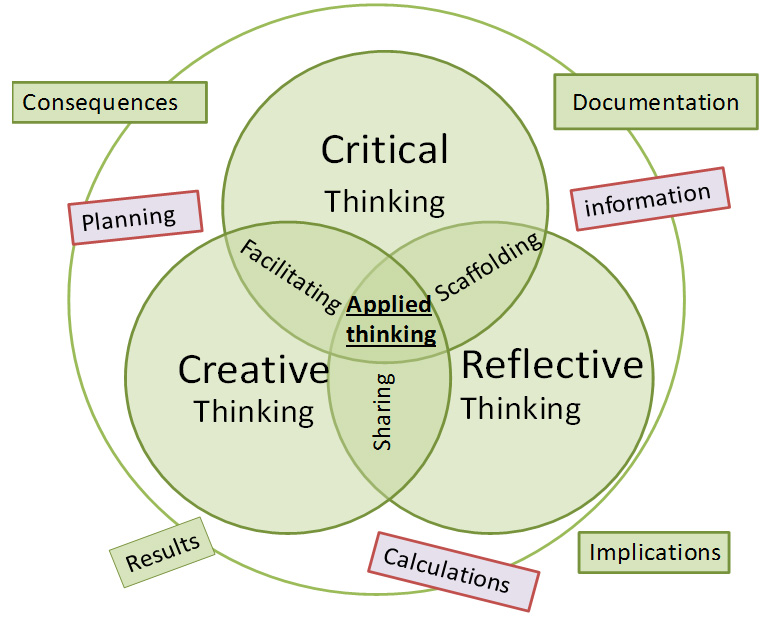
Creativity in the sense of the ability to produce ideas or new things but also to find new connections between ideas and things – a “divergent thought” that strays from a any kind of coding – belonging strictly to the method of procedure in the consciousness of all children.’
(creativity related to divergent thinking as opposed to the aesthetics of our present and practical reality.)
Creativity in the sense of the ability to produce ideas or new things but also to find new
The topic/project approach encourages each child to creatively design his/her own learning style and expression of creative activity. Where by individual attributes are combined in an infinite variety of activity initiated by the individuals chosen social and environmental relationships and ‘The complexities of Human Potential’illustrated by the author as follows:
Qualities associated with the Human Potential
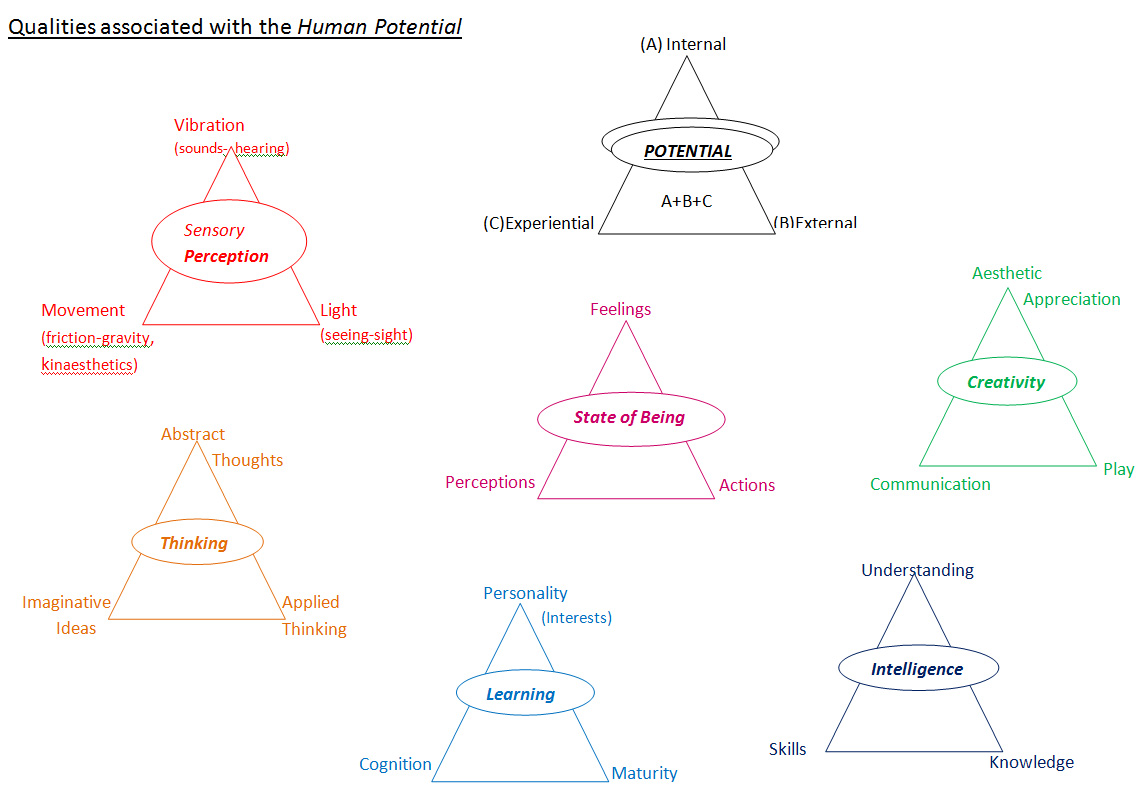
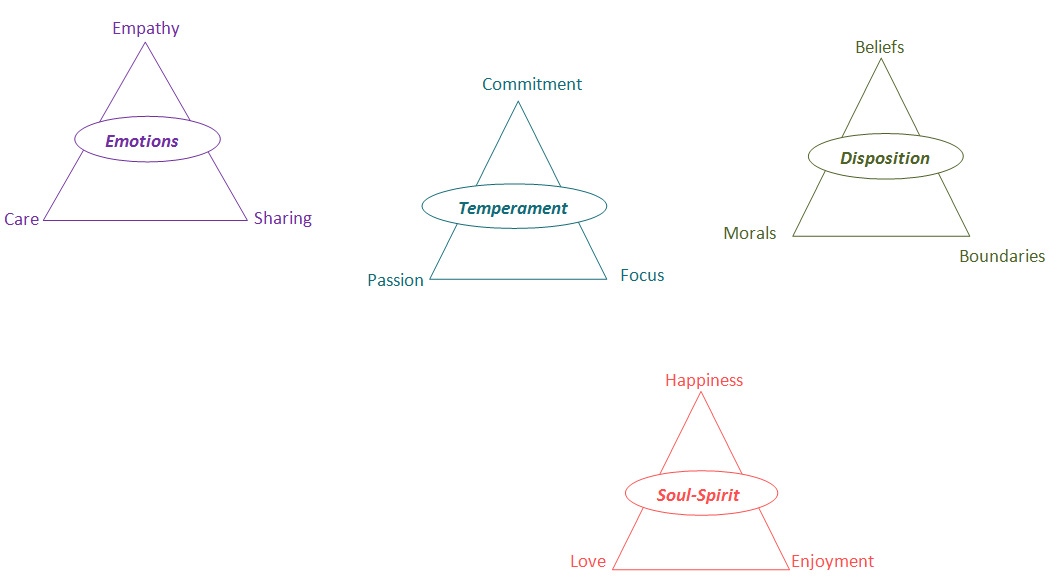
Conclusion
The adults in Reggio education work together with the children as a team and no one has a leadership status of superior authority and control. Warm respectfully collaboration on all levels of interaction encouragesan internal curriculum whereby strengths, personalities and perspectives can to come together, ‘often challenging each other to create a new perspective and knowledge’ alongside ‘ cognitive development through skills, knowledge, understanding and creativity while exploring an ‘excellence in early childhood education.’Authentic childhood p94-92’ [
The Reggio approach appears to have changed the premise of adults directing the children’s learning to one of scaffolding the children’s activities through environmental provisions and a collective theme of study combined with media documentation.
‘Interactions between children and either an adult or a child who is more confident act as scaffolding to nudge children to go beyond what they can achieve on their own.’ (Frazer, Gestwiki,Ed. 2002:66) .

Freedom within creative activity releases children from following
conventional thinking and structures of behaviour.
‘Frederica (age three) knows horses have four legs; she turns the piece of paper over and draws the other two legs on the reverse side’ (Rinaldi,2006:115) illustrating a cognitive level of expression bridging II and III dimensional creativity.
Encouraging open ended questions of enquiry.
‘In the shadow of the zebra can you see the white stripes or the black stripes better?’ (Reggio Children,2000:89)
Reggio teachers foster ‘the children’s competence by explicitly teaching techniques.’
One child was unable to successfully use a wire cutting tool, silently the adult intervened to demonstrate. On this occasion the adult chose to provide a demonstration without any verbal commentary. (Lewin Benham,2006:16)
Supporting child-directed learning through an emergent curriculum of child initiated topics Reggio educators seem to be comprehensively relating Creativity to ‘the art of teaching’(Steiner,1982)within the Zone of Proximal Development.(Vygotsky citedin Frazer, Gestwiki,Ed. 2002:66)
However, the author suggests that it is still the quality of adult intention that can influence the child’s development within the context of an evaluation and interpretation of the child’s world of passion, doing and well being. The adult’s internal assessment and integration of external and internal changes may thereby be related to the children’s playful inferences, implications, and subtle accommodation of adult judgments and values. Areas of concern could be considered within the controlling qualities of directing the children’s learning into an imposition disguised as a problem solving quest and/or unnatural levels of stimulus entertainment, presented as enrichment through an environmental impact artificially imported by the adults.
However, the Reggio environment appears to encourage personal investigation, discovery, and shared learning experiences, and respects the children’s need to revisit their learning experience and create continuity within a broad spectrum of flexibility and creative activity. (Early Childhood,2005:19&14)
It would appear that the Reggio schools have brought some degree of harmony to the seemingly polarised distinctions between child-initiated and adult-initiated curriculum, through a community approach where adults and children share an open ended topic style of progressive curriculum based on natural creativity and personal enquiry.
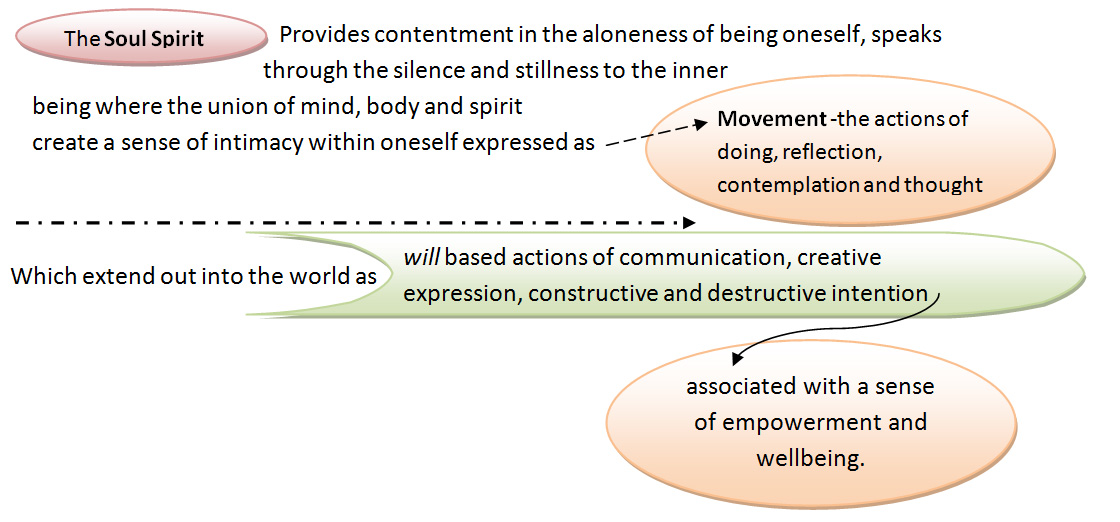
In the following chart the authorrelatesearly year’s development in three consecutive stages. Steiner, Montessori and Piaget present a strong differentiation between each stage, presented in the consecutive columns in the chart below. Whereas the Reggio approach appears to be successfully accommodating within the 3-6 years what is described above in the 6+ stage
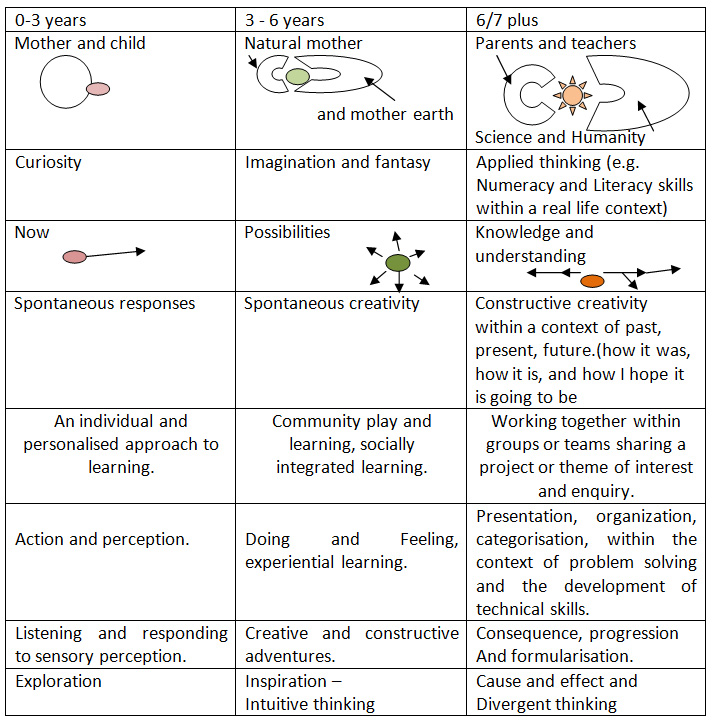
Steiner, Montessori and Piaget – Early Year’s Development
The success of the Reggio approach could be questioned in the light of the Steiner and Montessori pedagogy that present the more formal and academic approaches to learning, particularly studies of natural phenomena and associated sciences, should only begin after the age of six years. Whereby, the early years are held as a time of deep reverence and sensitivity to feelings and creative experiences as opposed to academic skills, worldly knowledge,ability and independence.
Areas of cautionary concern for both the adults and the children appear to be:-
- integrating freedom with a responsibility for safety;
- encouraging independence and self help without compromising standards of hygiene and healthcare;
- and inspiring personal confidence and authenticity,such that, unhealthy submission of an individual to a collective (ora collective to an individual) is minimised.
The adults’ authoritative role as carer does not appear to have any preconceived specification.The Reggio stafforganically relate to their own standards from their own personal knowledge of the children’s individual needs, and associated perspectives on safety and subsequent presentation of boundaries.Reggio specifically addresses freedom, liberation and democracy within education as one of relationships combined with a commitment to deep and openhearted participation, whilst embracingnecessity and freedom, creativity and reflection, relationships and communicationrather than a preconceived structure of rules,.
‘…..a real school is one where each person who operates in it, stimulates and invites each of the small young individuals to express their freedom: I believe that this is the great horizon of education.’ (Masullo cited in Edizoni,Ed.2006:35)
In 1947 a small community of villagers successfully began their dream to change their young children’s education in the hope of creating a better world for everyone. The first Reggio school has seeded much thinking and change within the realms of children’s care and education. Many other Reggio schools have been established since the first in 1947, each one a unique example of a passion for living and learning together. Hopefully, this influence will continue to flourish all over the world and support new perspectives on the roles of parent, carer and educator, within the widest context of culture, prosperity and religion and thereby empower children of all ages and ability to create their future happiness.
Conclusion
The essence of Reggio approach is summarised by the author in the chart below:-
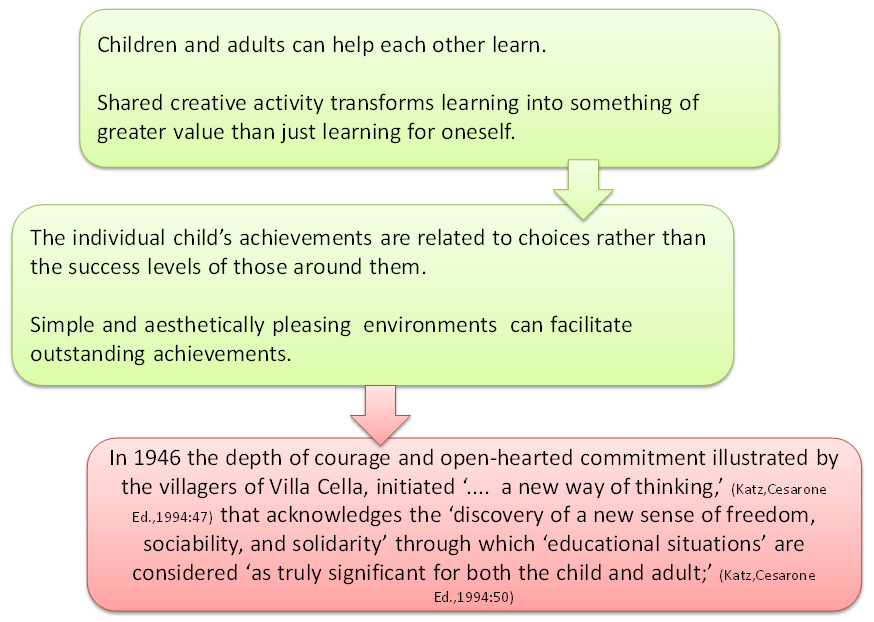
Reggio Emilia Bibliography
Abbot, L. &. Nutbrown, C. Experiencing Reggio Emilia: implications for the pre-school provision. Buckingham: Open University press, 2001.
Bancroft, S. Fawcett, M. Hay, P. 5x5x5 Researching Children Reseaching the World.Chippenham:5x5x5=Creativity, 2007.Barazzoni, B. Brick by Brick, English Ed. Reggio Emilia: Reggio Children, 2000.
Bernard, H.W. Psychology of Learning & Teaching. New York: McGraw-Hill,1965
Bruce, T. Cultivating creativity in babies toddlers and young children. London: Hodder & Stoughton, 2004.
Bruner, J. Beyond the Information Given, London: George, Allan & Unwin Ltd.,1974.
Ceppi, G. &Zini, M. Eds, Children, Spaces, Relations, Reggio Emilia: Reggio Children, 1998.
Curtis, D. & Carter, M. Learning Together with Young Children.St. Paul: Redleaf Press, 2008
De Bono, E. Teach Your Child How To Think. London: Viking, 1992.
De Bono, E. Six Thinking Hats. London: Penguin Book Ltd., 2000.
Duffy, B. Supporting Creativity and Imagination in the Early Years. London: Anvil Press, 1998.
Edizoni, J. Ed. Crossing Boundaries. Italy: Edizoni Junior, 2006
Edwards, C., Gandini,L. &Forman, G. 2nd Ed. The Hundred Languages of Children.London: Ablex Publishing, 1998.
Feeney, S. Galper, A. Seefeldt, C. Continuing Issues in Early Childhood Education 3rd Ed. Pearson Education: 2009.
Frazer, S. &Gestwicki C. Eds. Authentic childhood. Belmont: Delmar, 2002.
Gardner, H. Frames of Mind. Hammersmith: Fountain Press, 1993.
Gardner, C. H. &Kornhaber, M.A. & Wake, W.K. Intelligence: Multiple Perspectives, London: Harcourt Brace College Pub. 1996.
Gardner, H. Intelligence Reframed
Hellinger, B.With God in Mind.Hellinger Publications, 2007.
Horne, T. &Wootton, S. Teach Yourself – Train the Brain. Part 1. London: Hodder Education, 2007
Hughes, F.P. Children, Play and Development.Massechussetts: Allyn& Bacon, 1999.
Katz L. G. &Cesarone Eds. Reflections on the Reggio Emilia approach. Illinois: ERIC, 1994.
Lewin-Benham, A. Possible Schools, the Reggio Approach to Urban Education.London: Teachers College Press, 2006.
Macintyre, C. Enhancing Learning Through Play. London: David Fulton, 2001.
MacNaughton, G. & Williams, G. Teaching Young Children: choices in theory. Berkshire: Open University Press, 2004.
Manning, K. Structuring Play in the Early Years at School. London: Ward lock educational, 1977.
Meadows, S. The child as Thinker 2nd Ed. London: Routledge, 2006.
Megre, V. A Space of love.The Ringing Cedars Press, 2005.
Overall, L. Supporting Children’s Learning, a guide for teaching assistants. London: Sage, 2007.
Piaget, J. &Inhelder, B.The Psychology of the Child. London: Routledge & Kegan Paul. 1969.
Pollard, A. Reflective Teaching. London: Continuum, 2002.
Reggio Children of the Diana & Gulliver Preschools.Everything has a shadow except ants, 2nd Ed. Reggio Emilia: Reggio Children, 2000.
Reggio Children of the Fiastri and RodariMuniciple Preschools of Sant’llariod’Enza, The Future is a Lovely Day. Reggio Emilia: Reggio Children, 2001.
Reggio Children from the Diana School, ADVISORIES.Reggio Emilia: Reggio Children, 2002.
Rinaldi, C. In dialogue with Reggio Emilia. London: Routledge, 2006
Thornton, L. &Brunton, P. Understanding the Reggio Approach. London: David Fulton, 2005.
Williams, J. Promoting independent learning in the primary classroom. Buckingham: Open University Press, 2003.
Journals
Children in Europe. March 2004. Edinburgh: Children in Scotland, 2004.
Early Childhood. Folio 9:2005
Nursery World 5th Feb 2004
DVDs
Buzan, T.& Griffiths, C. The story of Mind Mapping.
Gilbert, P. Ed., 100 Voices – 5x5x5 Researching Children Researching the World. Bath: 5x5x5 Creativity n. d.
The school – Humanities new future- www. TEKOS.org Dreams Fulfilment LLC 2009
